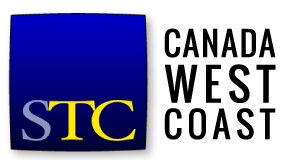Renée McTavish is a technical writer and Certified Professional Résumé Writer™. On May 28, 2018, the STC Canada West Coast chapter held a webinar in which Renée shared tips on how technical writers can use résumés, LinkedIn, social media, and portfolios.
Résumés
Résumés focus on how the applicant’s skills match the employer’s needs.
Résumés are headed by name and contact information. As résumés are not legal documents, the use of legal names is not required. Names should be in a larger font size and can be in colour to make the résumé stand out. Street addresses are not required on résumés, though recruiters and employers should know an applicant’s country, city, and province.
A summary or profile, the next section of the résumé, should be tailored to each job application. The job posting is a useful model for choosing keywords, but résumés should not simply repeat the wording of job postings.
Next is a skills or technology summary, a quick overview of hard and soft skills relevant to each position. Technical skills include software applications, content management systems, programming languages, and other tools for creating manuals or video tutorials. For technical writers lacking some required skills, trial versions of software are a useful way to gain new experience.
The next résumé section lists work experience. Entries for each job should include the job title, dates and location of employment, and three to five bullet points that highlight skills and past accomplishments relevant to the job posting. New technical writers should highlight relevant transferable skills from education or previous jobs.
The section on education and certifications, is a chance for technical writer to show they are up to date with computer skills and other developments.
Résumés follow different patterns of organization:
- Chronological résumés, which list work history from newest to oldest, are best for those with clear career paths related to the job posting.
- Functional résumés emphasize skills and experience, rather than work history. They de-emphasize employment gaps and are good for those who are switching careers.
- Combination résumés include both chronological and functional elements.
- Targeted résumés are strictly tailored to a specific job posting. This format shows how the applicant meets the very specific needs of the employer.
Résumés are not commonly more than two pages long and are printed in ten-to-12-point Calibri or Arial font. Formatting should be simple and include white space. Many employers use application tracking systems; machine readers can process bulleted lists made with tabs easier than lists made with tables.
Cover letters
Cover letters allow applicants to communicate directly with potential employers. Targeted for each job posting, cover letters explain why the applicant will fit in with the company and how the employer will benefit from hiring the applicant.
Using LinkedIn, recruiters directly contact potential job candidates, and technical writers make connections with colleagues and friends. A LinkedIn profile is a version of a résumé and should include a profile summary, work experience with company details, and a list of applicants’ skills. LinkedIn is also an opportunity to post portfolio examples.
Social media
Facebook, Twitter, Instagram, and other social media are a part of modern life. Social media users should use account privacy settings and avoid posting inappropriate or offensive material. Employers check candidates’ internet presence; however, privacy laws prohibit employers from requesting passwords or asking candidates to log into social media accounts during an interview.
Portfolios
Compiling portfolio examples can be complicated by non-disclosure agreements that prevent technical writers from including company projects in portfolios. In these cases, portfolios can include work done in classes and seminars, or projects created while learning new software. Portfolio pieces should be shared online via a public link such as Google Drive, Dropbox, or a personal website. Technical writers should come to interviews with printed and digital samples of their work.
